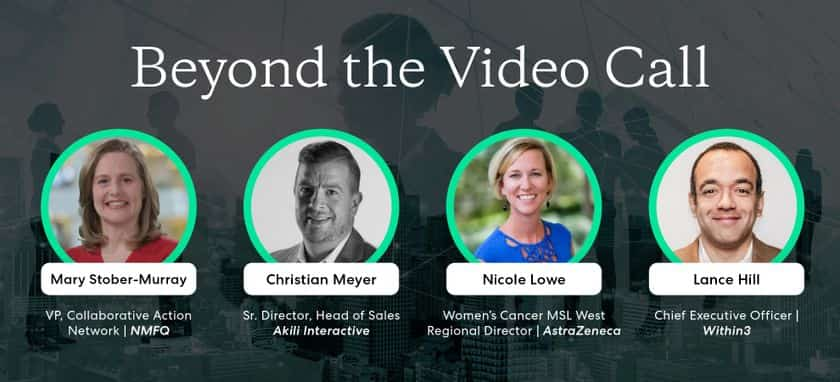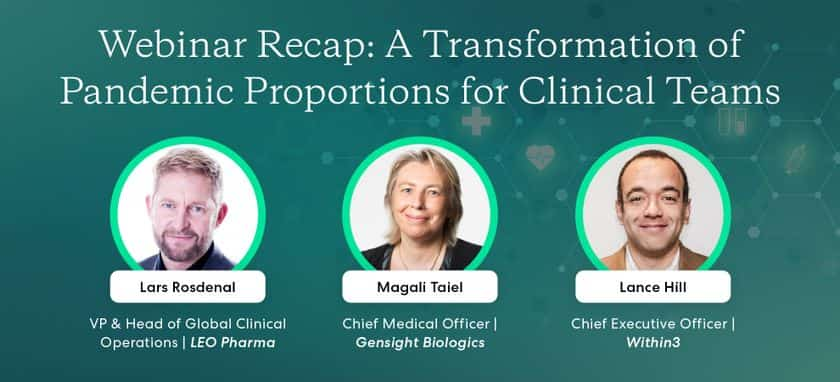Within3 clients were ahead of the curve in adopting virtual engagement across diverse use cases, with asynchronous session volume doubling every six months since 2019. Within3 CEO Lance Hill recently moderated a webinar in which an expert panel discussed how life science companies have been using video calls to engage their audiences and how to improve future interactions by shifting to a hybrid virtual environment.
“Within3 was a tool that played a big role in getting our customers more comfortable with these technologies,” said panelist Nicole Lowe, Women’s Cancer MSL West Regional Director, AstraZeneca.” “We have found that they are now much more open, engaged, and tech-savvier.”
The problem with real-time engagement and how an over-time approach solves it
Real-time virtual meetings are the format that most people envision when they think of virtual meetings – usually on a platform like Zoom or Webex, held at a set date and time. Although this format is the most common, there are drawbacks. In addition to scheduling conflicts, clinical obligations, and at-home distractions, it can be difficult to work efficiently in this setting, depending on the number of people involved and the level of detail needed to complete the job.
“The beauty of Within3’s platform is that it gets the engagement when participants are ready and willing to be engaged,” said Christian Meyer, Senior Director, Head of Sales at Akili Interactive. “Physicians were very involved, interested, and excited about a new opportunity. Some physicians will be dialed in for two hours, providing feedback, while others will clock in 10 times for five minutes each. It really accommodates their schedule and their style.”
Mary Stober Murray, Vice President of Collaborative Action Networks, National Minority Quality Forum, added, “The over-time format has also allowed patients to share more in-depth explanations of what it means to live with a certain condition every day. A patient advocate saying ‘I can’t feel my feet’ or ‘I can’t walk without the fear of falling’ gives a much more concrete idea of how conditions can affect everyday life versus a physician’s clinical description. These are the kinds of powerful anecdotes that we probably would not get if it was a 90-minute session with a large group.”
What is the future of virtual interactions in the life sciences?
“The analytics we get from virtual engagements are usually much better than a live meeting,” said Meyer. “It’s the kind of data you didn’t think you needed or was important but is incredibly constructive for future engagements. We can see how long doctors spend on certain questions, get their honest feedback on questions, and probe further on how to improve the experience. These key details can be uncomfortable to share in an in-person or a real-time virtual setting.”
AstraZeneca’s Lowe acknowledges that while there will definitely be an appetite for face-to-face meetings, tools like Within3 are here to stay. “We foresee a hybrid platform in the future,” she said. “Face-to-face engagements alone just can’t provide the same type of valuable insights in a short amount of time while still providing ease of access for all parties. We plan to leverage what we’ve adopted so far and then incorporate face-to-face meetings when possible.”
Watch the full panel discussion.






